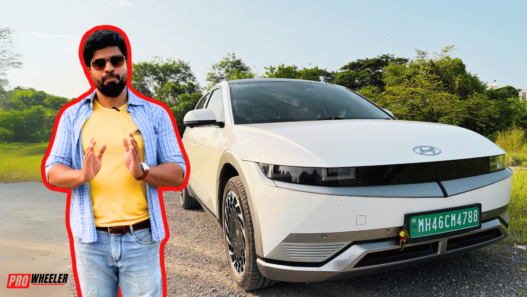In a significant move to make electric vehicle (EV) charging more affordable, the Ministry of Power (MoP) has revised its guidelines for EV charging tariffs. Under the new policy, the rates for fast charging have been reduced from the previous range of ₹18 to ₹24 per unit to ₹11 per unit during solar hours and ₹13 per unit during non-solar hours. The revised tariffs aim to support the growing EV market in India while encouraging the use of renewable energy.
Tariff Reductions and Advisory Nature of Guidelines
Although these new tariffs are not mandatory for private EV charging operators, the Ministry’s intent is clear: to lower EV charging costs nationwide. While the guidelines remain advisory, the MoP also provided tariffs for slow charging, setting the rate at ₹3 per unit for solar-based charging and ₹4 per unit for non-solar charging. By advocating for a transition to solar energy, the Ministry hopes to reduce operational costs and lessen the burden on the national power grid as EV adoption accelerates over the next few years.

Solar Energy and Grid Pressure Relief
The revised guidelines promote solar energy usage by offering lower tariffs during solar hours (9 a.m. to 4 p.m.), in line with the government’s efforts to encourage renewable energy sources. The Ministry stated that “the cost of electricity at charging stations will not exceed the Average Cost of Supply until March 2028.” This ensures affordable and sustainable power for EVs, especially as India is expected to see rapid growth in EV sales.
Rising EV Adoption and Charging Infrastructure
India has witnessed a significant rise in EV adoption, with registrations increasing by 16% in the first half of 2024 compared to the same period in 2023. EV sales nearly doubled in 2023, with projections indicating a 66% growth by the end of 2024. As of March 2024, nearly four million EVs had been sold in India, making EVs a significant consumer of electricity.
Venugopal Rao Nellutla, an independent consultant with Saera Keto Motors, highlighted that the shift towards solar-based charging will accelerate EV adoption, reduce consumer costs, and boost revenue for charge point operators.
Expanding Public Charging Infrastructure
India’s public EV charging infrastructure has grown nearly ninefold, from 1,800 stations in February 2022 to 16,347 by March 2024. However, analysts believe that more infrastructure is needed to meet future demand.

To promote public EV charging, the MoP guidelines stipulate that distribution licensees will charge 0.7 times the Average Cost of Supply (ACoS) during solar hours and 1.3 times ACoS during non-solar hours. Additionally, the guidelines suggest that government entities provide land to private operators at subsidized rates in exchange for a share of revenue over a 10-year period, based on electricity consumption at charging stations.
Strategic Placement of Charging Stations
The guidelines also emphasize the strategic placement of charging stations. In urban areas, at least one public charging station must be available within a 1 km x 1 km grid, while along highways, stations must be located every 20 km for regular EVs and every 100 km for long-range and heavy-duty vehicles like buses and trucks.
Standardized Charging Protocols and Real-Time Data
To enhance user experience, the government has mandated the use of the Open Charge Point Protocol (OCPP), enabling real-time monitoring, booking, and payments at charging stations. A national database of charging stations will also be established to help users find nearby charging points through mobile apps and online platforms.
Faster Connection Timelines and Penalties for Delays
The guidelines also ensure that distribution companies provide electricity connections to charge point operators within specific timelines. In metropolitan areas, connections must be provided within three days; in municipal areas, within seven days; and in rural areas, within 15 days. Failure to meet these timelines will result in penalties as per the Electricity (Rights of Consumers) Rules, 2020.
Annual EV Demand Assessments and Building Bye-law Amendments
To ensure sufficient charging infrastructure, the Ministry of Power has directed municipal corporations to conduct annual assessments of potential EV charging demand. The State Nodal Agency (SNA) will publish this data for use by charge point operators.
The Ministry of Housing and Urban Affairs (MoHUA) has also amended sections of the Model Building Bye-laws (2016) and Urban and Regional Development Plans Formulation and Implementation Guidelines (URDPFI – 2014) to account for evolving EV charging technologies. These amendments encourage local development authorities to allocate space for EV charging stations in new buildings and urban development plans.
Directives for Oil Marketing Companies and Payment Options
Oil marketing companies (OMCs) have been instructed to install public EV charging stations at their outlets and prominently display signage to inform EV owners. The guidelines also recommend flexible payment options, including prepaid and postpaid plans with potential discounts during solar hours.
Additional Amenities and Fast Charging for Heavy Vehicles
For large charging stations with more than ten chargers for four-wheeled vehicles, the guidelines mandate additional amenities such as restrooms, drinking water, and covered waiting areas. For long-range EVs and heavy-duty vehicles, such as trucks, high-power fast chargers with a minimum capacity of 240 kW and liquid-cooled cables must be provided to support faster charging.
By revising these guidelines, the Ministry of Power aims to drive EV adoption, reduce costs, and establish a sustainable, solar-based EV charging infrastructure across India.



















